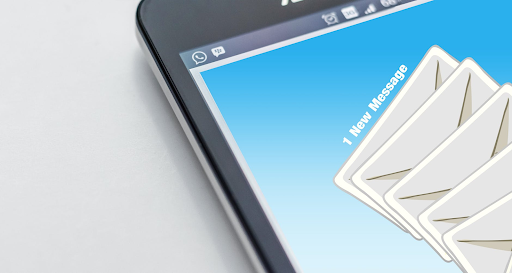Email marketing is a very lucrative channel and a powerful tool to deliver sales to your business; any technical or strategic setback you run into pinches money from the bottom line.
Bounced emails are frustrating. When your emails don’t reach a portion of your audience, even the best marketing companies have campaigns that flop. A high bounce rate email can cripple your email deliverability, and that’s why you have to monitor and proactively manage your email bounces closely.
What is an Email Bounce Rate?
In email marketing, an email bounces back when the subscriber’s email server rejects an email from your server.
Bounce rate measures the percentage of recipients from your marketing campaign who did not receive your email. We classify email bounce rate into two: hard and soft email bounce rates.
Soft bounces are due to temporary server issues. The email is delivered but bounces back before reaching the recipient’s inbox. The reasons include;
- The email message is too big for the recipient’s inbox
- Your subscriber’s mailbox is full (subscriber has reached their email quota)
- Your recipient’s email server is down
- The recipient’s settings do not support an email from the sender
- The recipient’s email recognizes suspicious or spammy content
A soft bounce can become a hard bounce when an email bounces back a couple of times with no opens or clicks recorded during that span.
With hard bounces, the email will never be delivered and returns to the server due to several permanent reasons:
- Your subscriber’s mailbox is no longer active
- The email address doesn’t exist or is invalid
- The domain name doesn’t exist
How do you calculate email bounce rate?
To determine the bounce rate, divide the total number of hard bounces by the total number of emails sent.
Bounce rate is the number of undelivered emails returned expressed as a percentage of the total emails sent. With the email bounce rate formula you;
- Divide the total number of undelivered emails by the total number of emails sent. The result is the total number of bounces per email.
- Multiply your bounce per email rate by 100 to get your bounce rate as a percentage.
What is the average bounce rate for email marketing?
Average bounce rate for email campaigns is a direct correlation of the quality of subscribers in your email list.
MailChimp’s Email Marketing Benchmarks (updated March 2018), indicates that a typical email bounce rate benchmark should be 2%. But the email bounce rate industry standard is capped between 2-15% depending on the industry.
Does bounce rate contribute to email deliverability?
If your email bounce rate is higher than the benchmark, you should analyze your email marketing campaigns to ensure your subscribers receive your emails or else you could get a lower sender score and risk your account getting suspended by mail exchanger (MX) servers.
A low bounce rate reflects a high-quality list of engaged subscribers. But a high bounce rate is interpreted as problems with your email list management and possible acquisition methods.
Therefore, your list needs some cleaning up. A high bounce rate can ruin your email deliverability in various ways:
- Blacklist – high bounce rates can land your IP address to the blacklist
- Bad reputation- internet service provider (i.e., Yahoo and Gmail) look out for Internet Protocol (IP) addresses that send messages to invalid email addresses repeatedly, this is to determine sender reputation.
What causes a high bounce rate of emails?
- Your list import has formatting errors
- Your list has stale and/or invalid email addresses
- You are using a free email service for your email address
- Your list contains poor data
Steps to reduce email bounce rate
Here are some critical steps that you can take to help keep your email deliverability high and your email bounce rate low:
- When you encounter a hard bounce, immediately remove the email address from your mailing list. Despite most email- deployment platforms automatically removing hard bounces from the system it is better to validate that your platform has permanently removed them.
- Authenticate your emails to ensure delivery into your subscriber’s inboxes. It’s the way you verify that the domain used in the “from” address is under your control.
- Build and maintain a valid permission-based email list. It is the single most important rule to keeping your email bounce rates low.
- Adopt a preference center. An email preference center works by giving your subscribers choices and control over the types of information and how many emails they should receive from you.
It can help keep your bounce rate low and ensure your email marketing campaigns are successful. - Send emails to your subscribers regularly and continuously. You are less likely to experience a few spam complaints, high bounce rates, and higher subscriber engagement.
Regularly emailing your subscribers will help prevent a high number of bounces occurring at a go when people change their email addresses. - Track your email bounce rate and your performance results. The longer you let issues such as weak subscriber engagement and high bounce rates go undetected, the more you are likely to get a bad-sender reputation which will negatively impact your email deliverability.
- Personalized Content and formatting- emails with compelling subject lines, sufficient details and engaging content are essential to entice the reader to read further. Ensure your email design is responsive and displays nicely in devices of all sizes.
Install an unsubscribe link at the bottom of the email which makes it easy for your readers to unsubscribe. It will help avoid readers from hitting the spam button. The CAN-SPAM Act of 2003 has clear guidelines on email marketing.
The Bottom line
Email delivery is essential for an effective email marketing campaign. Email bounce rate is one of the most important metrics to monitor after you have sent out an email campaign. Focus your procedures on eliminating hard bounces, tracking soft bounces, and cleansing your list of long-term inactive subscribers as well.

